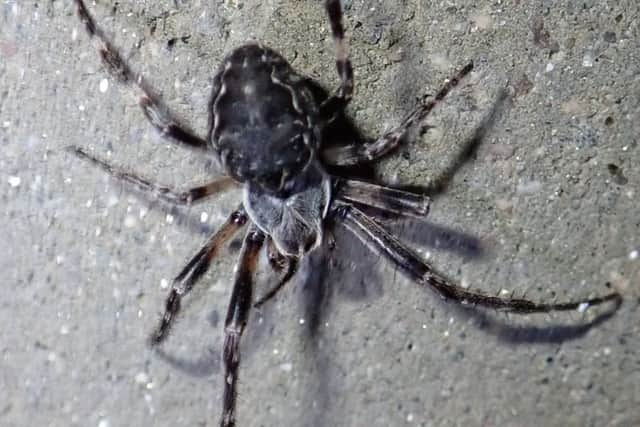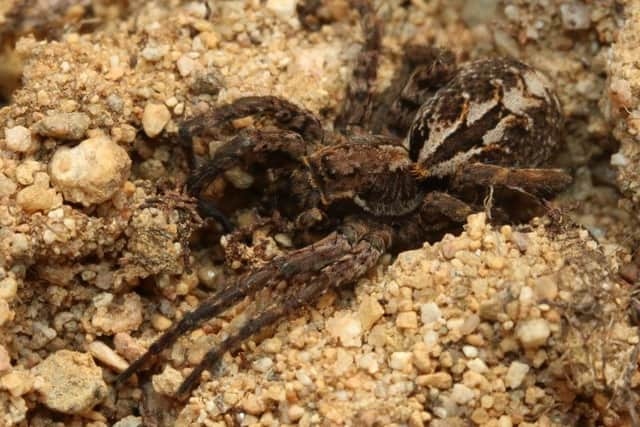Rare large spider discovered in Highlands for the first time
The bridge orbweb, which is more commonly seen in the south of England, was found in the Cairngorms national park last month.
Two burrowing wolf spider species, which hunt down and pounce on their prey, have also recently been identified in the area.


Advertisement
Hide AdAdvertisement
Hide AdBadenoch & Strathspey Conservation Group (BSCG) members have welcomed the appearance of the “interesting and spectacular” arachnids, which they believe shows the good state of the local environment.
BSCG convener Dr Gus Jones, of Nethy Bridge, stumbled upon the bridge orbweb by accident during a nighttime search for other insects near Boat of Garten.
“Bridge orbwebs are mainly nocturnal and I found them while out with a torch in February,” he said.
“They are found in a few other places in Scotland but usually further south.


“They may have been here all the time but this is the first time they have been positively identified living wild in the Cairngorms and the Highlands.”
A single specimen showed up in an Inverness museum during the 1990s.
Its origin was unknown but the eight-eyed, eight-legged critter was thought to have arrived with a piece of furniture that had been stored in a warehouse in Alness.
The species usually lives in waterside habitats, snaring prey such as river flies that can be attracted to light, but it also favours man-made constructions such as bridges.
Advertisement
Hide AdAdvertisement
Hide AdBridge orbwebs can be recognised by a v-shaped pattern of white hairs on the head and a light-coloured marking on the underside of the body.
The unexpected find comes only months after the naturalist spotted the hairy-footed wolf spider in the national park for the first time.
Not much is known about the species, properly known as Alopecosa barbipes.
The creatures dig holes, where it’s thought they conceal themselves as they wait to ambush unsuspecting prey such as other spiders and springtails.
Dr Jones sighted the stealthy hunters while observing another wolf spider species, the sand bear, which has also only recently been recorded in the Cairngorms - in heathland near the River Spey.
Sand bears are generally found in coastal dune habitats, so to be seen so far inland is unusual.
Dr Jones said the discoveries are great news for the local area.
“The fact that we’ve got these rare spiders shows it’s a rich area for biodiversity - they are a good indicator for the health of the habitat,” he said.
Advertisement
Hide AdAdvertisement
Hide Ad“These creatures are an attractive and interesting part of our diverse wildlife and will likely attract nature tourists.
“The Cairngorms is an important area for nature and should be protected from over-development.”
